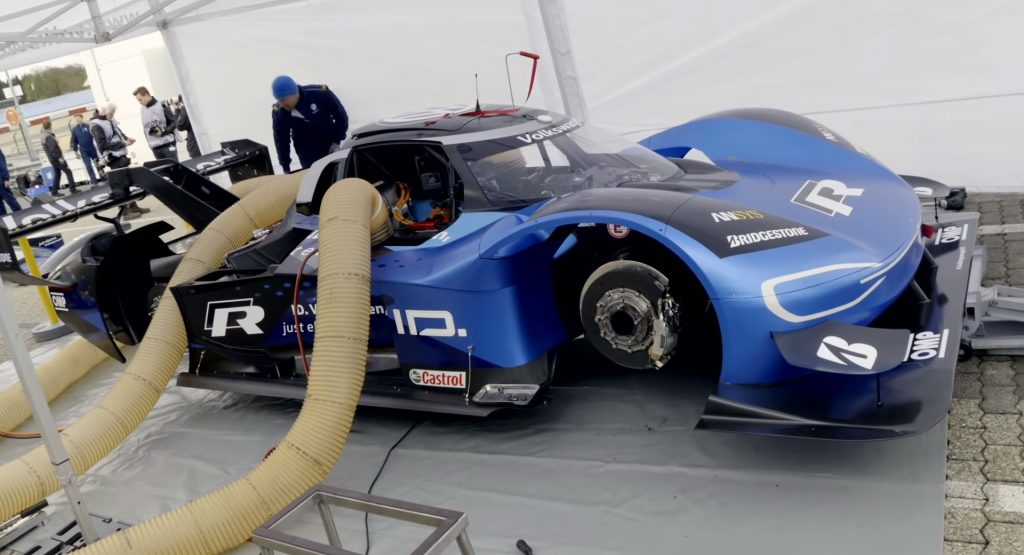As the ID.R race car prepares to attack the Nurburgring and claim the EV lap record, VW is shedding more light to its advanced charging system.
“To drive a whole lap of the Nordschleife with full performance is a huge challenge for electric drive,” François-Xavier Demaison, Technical Director of Volkswagen Motorsport, said. “Therefore, optimal charging before the lap begins, along with the recuperation when driving, are of crucial importance.”
VW’s electric race car features a lithium-ion battery pack made out of eight modules with 56 cells each. These modules are divided into two blocks next to driver and behind the monocoque.
Also Read: VW ID.R Unveiled With Optimized Aerodynamics For Nurburgring Record Attempt
One of the most important aspects of VW’s lap record effort is the charging strategy of the ID.R. “The aim is to send the ID.R onto the track for the record attempt with each individual battery cell at the optimum state of charge,” said Marc-Christian Bertram, Head of Electrics and Electronics at Volkswagen Motorsport.
For that reason, the electric racer is supplied with juice from two fast-charging systems at the same time that are running at a comparatively low power output of 90kW each. This keeps the heat generation at the desirable low levels but still manages to top up the battery pack in around 20 minutes.
When charged, the ID.R’s battery pack is also connected to an air-conditioning system in order to provide optimal charging conditions. “A battery temperature of about 30 degrees Celsius is ideal,” adds Bertram. “Because of this, the charged battery is normally preheated before the first lap and then cooled when stationary and charging.”
As for the charger itself, VW is using an innovative mobile power generator than runs on glycerin, a renewable raw material obtained as a waste product from the production of bio-diesel. Glycerin has proven ideal for VW’s purposes, as it when it burns it is almost pollutant-free and CO2-neutral.




